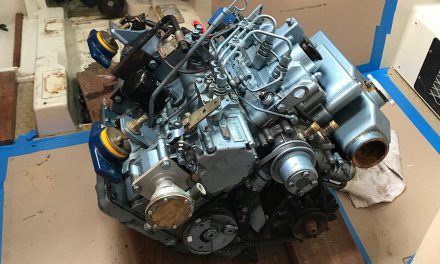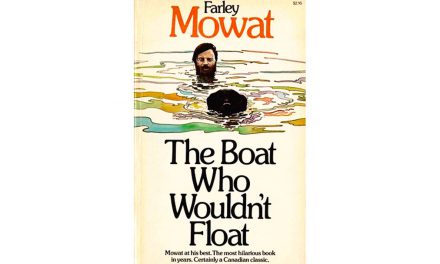
Ordinarily, I would not get too excited about another new cruising book, even one by as eminent an author as Nigel Calder, whose previous work, Boatowner’s Mechanical and Electrical Manual, has become an icon on both sides of the pond. While the cruising genre is a particular favorite of mine, recent offerings seem to have grown a bit redundant for those of us striving to keep abreast of the field. This book is a whole new ball game.
First of all, it’s a very big book, physically and in terms of its diverse subject matter. At just under 600 pages, in an 8 1/2- by 11-inch format, it is not something I would refer to as a “handbook” unless speaking to a gorilla. The word “encyclopedic” springs to mind, as it is truly monumental in scope and execution; a good thing, too, when you consider it carries a suggested price of $49.95.
McGraw-Hill did a commendable job of putting it all together. It looks like it might last, even in a marine environment, where it will most assuredly find a home. It features a water-resistant cover and flexible spine, designed to lie flat when opened, a wonderful feature on a pitching chart table, far at sea, where information is scarce and time of the essence. This book covers nearly everything, and it covers it in exquisite detail. It covers it in a manner anyone can understand. There are chapters relating to most any conceivable contingency a cruiser might run into, from boat selection, equipage, and maintenance, to the more esoteric areas of daily life on a cruising sailboat (and much more than I wanted to know about navigational history).
Nigel Calder remains the quintessential “systems man,” and his section on surveying a prospective purchase with its attendant checklist is, by itself, worth the price of the book. The section on weather and prediction should be required reading for every television forecaster in the country. There are up-to-date chapters on shipboard health and disease prevention criteria for every sector of the world. Nearly every page is clearly illustrated, and at the end of each technical chapter is a “worksheet” so you can evaluate your own vessel or system.
Here is a man not afraid to infuse his material with the very latest in technological know-how, even though it may at some point appear dated. For the mathematically inclined, there are charts, graphs, and formulas enough to satisfy the most gifted. And all this is just the tip of the iceberg. I have read this book cover to cover, word for word (it took a very long time). Is it the proverbial “one-book cruising library,” the definitive work on the subject? I think it may well be.
Nigel Calder’s Cruising Handbook by Nigel Calder (McGraw-Hill, 2001; 588 Pages)




